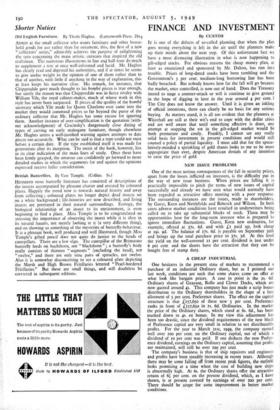British Butterflies. By Vete Temple. (Collins. 55.) Hamar° most butterfly
literature has consisted of descriptions of the insects accompanied by pleasant chatter and assisted by coloured plates. Happily the trend now is towards natural history and away from collecting ; coloured plates no longer depict dead insects set on a white background ; life-histories are now described, and living insects are portrayed in their natural surroundings. Ecology, the biological relationship of an insect to its environment, is even beginning to find a place. Miss Temple is to be congratulated on stressing the importance of observing the insect while it is alive in its natural haunts, not merely looking at it (a very different thing), and on showing us something of the mysteries of butterfly-behaviour. It is a pleasant book, well produced and well illustrated, though Miss Temple's gifted pencil does not quite do justice to the heads of caterpillars. There are a few slips. The caterpillar of the Brimstone butterfly feeds on buckthorn, not " blackthorn " ; a butterfly's body really consists of thirteen " segments " (excluding the head), not " twelve," and there are only nine pairs of spiracles, not twelve. Also it is somewhat disconcerting to see a coloured plate depicting the Marsh and High Brown Fritillaries lettered " Pearl-bordered Fritillaries." But these are small things, and will doubtless be corrected in subsequent editions.


































 Previous page
Previous page